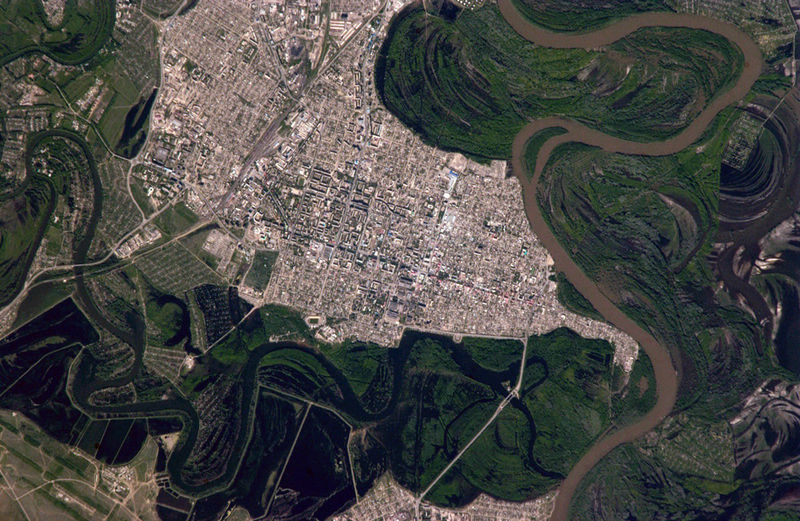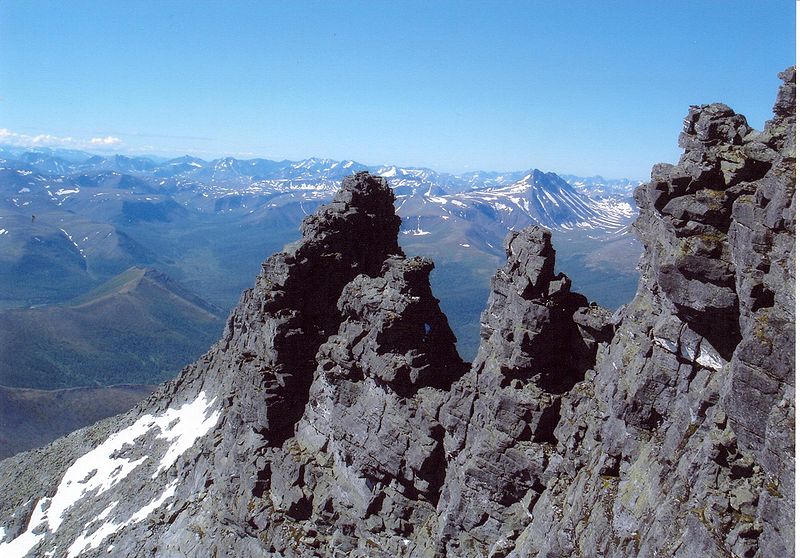URAL (YER-uhl)
Ural:
River through Russia and Kazakhstan
Ural Mountains: Europe/Asia
divider
Common
clues:
Russia's ____ Mountains; Eurasia's ____ Mountains; River
of Russia; River through Kazakhstan; Caspian feeder; Russian
flower
Crossword
puzzle frequency:
9 times a year
Frequency
in English language:
54594 / 86800
News: Earthquake
strikes Russia's Urals
Video: South
Ural
Ural, known as Yaik before 1775, is a river flowing through Russia and Kazakhstan. It arises in the southern Ural Mountains and ends at the Caspian Sea. Its total length is 1,509 mi (2,428 km). It forms part of the traditional boundary between Europe and Asia.

City
of Oral,
Kazakhstan with the Ural River to the right
It arises on the eastern side of the Urals, about 150 km north of Magnitogorsk, flows south through Magnitogorsk, and around the southern end of the Urals, through Orsk where it turns west for about 300 km, to Orenburg, when the Sakmara River joins. From Orenburg it continues west, passing into Kazakhstan, then turning south again at Ural'sk, and meandering through a broad flat plain until it reaches the Caspian at Atyrau.
The Ural Mountains are a mountain range that runs approximately from north to south through western Russia, from the coast of the Arctic Ocean to the Ural River and northwestern Kazakhstan. Their eastern side is usually considered the natural boundary between Europe and Asia. The mountains lie within the Ural geographical region and significantly overlap with the Ural Federal District and Ural economic region. They are rich in various deposits, including metal ores, coal, precious and semi-precious stones, and since the 18th century have been the major mineral base of Russia.

Mountain
formation near Saranpaul, Nether-Polar Urals
The Ural Mountains extend about 2,500 km (1,550 mi) from the Kara Sea to the Kazakh steppes along the northern border of Kazakhstan. Vaygach Island and the island of Novaya Zemlya form a further continuation of the chain on the north. Geographically this range marks the northern part of the border between the continents of Europe and Asia. Its highest peak is Mount Narodnaya (1,895 m or 6,213 ft).
By topography and other natural features, Ural is divided, from north to south, into the Polar (or Arctic), Nether-Polar (or Sub-Arctic), Northern, Central and Southern parts. The Polar Ural extends for about 385 kilometers (240 miles) from the Mount Konstantinov Kamen in the north to the Khulga River in the south; it has an area of about 25,000 km² and a strongly dissected relief. The maximum height is 1,499 meters (4,915 feet) at the Payer Mountain and the average height is 1,000–1,100 meters (3,280–3,605 feet). The mountains of Polar Ural could have sharp ridges but there are also flattened or rounded tops.
This article is licensed under the GNU Free Documentation License. It uses material from the Wikipedia article "Ural River" and “Ural Mountains”.
|
|